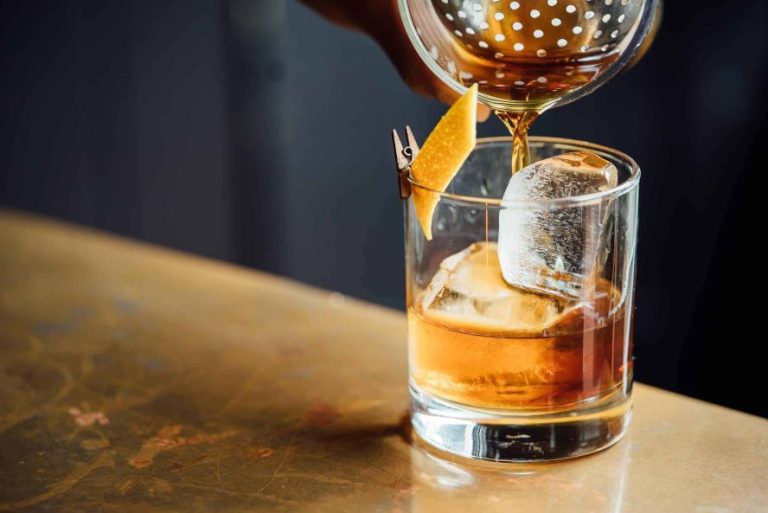Why Whisky Distillers Are Playing with Yeast

YEAST IS one of the three ingredients used to make Whisky, yet its flavour-creating abilities have been underrated for decades.
Gavin D. Smith explores how distillers are now playing with uncommon strains to generate exciting new flavours.
There is an old saying in the business that you can’t make good whisky without good wash. In other words, what happens during mashing and fermentation is crucial to creating quality spirit.
Along with malted barley and water, yeast is the only other ingredient allowed in the production of single malt whisky, and its role is to convert the sugars created during mashing into alcohol, at the same time producing carbon dioxide and heat.
Yeast is a single-celled fungus with many species, but the one relevant to whisky production is Saccharomyces cerevisiae, of which there are many individual strains.
For some years now, the Whisky industry has not seemed terribly interested in yeast as a potential flavour contributor to its spirit, seeking only to achieve maximum alcohol yield in the most efficient manner, though more yeast-related work may be going on behind the scenes than we imagine.
CLICK HERE for Global Flavors Latest Exclusive Flavour – Grainge Single Malt Whisky Spirit Essence
The old practice of mixing brewers’ and distillers’ yeast died out almost everywhere some years ago, and today a few standardised strains of distillers’ yeast keep most whisky-makers happy.
According to distillery manager Keith Cruickshank: ‘We use winter ale-dried yeast. We mix a small amount of it, and it gives us more fruitiness, more apple and pear notes, in the wash. It’s subtle, but we think it’s important. For brewers, yeast is god in terms of what it can do for flavour, while for whisky distillers it’s become much less important in that respect.’

However, as a new generation of independent whisky-makers appears, focused on the importance of flavour differentiation rather than yield maximisation, yeast is one of the items that is being put under the microscope – quite literally – to explore how the use of different strains can potentially have an influence on ultimate spirit character.
The movement is also supported by some of the established producers, using wild yeast discovered in malting barley fields close to the distillery.
One head of maturing whisky stocks says: ‘With some bottlings we’ve always been innovative, and for this one, our director of distilling and whisky creation decided we should have our own bespoke barley strain. Taking inspiration from winemakers sourcing yeast from grape skins, we scraped ears of malting barley and sent that off to yeast specialist Lallemand to identify the various flora and fauna present.
‘It picked out three yeasts that had alcohol-yielding potential and narrowed it down to one. We distilled with it for one week, making sure the yeast was the only thing we changed. There were quite striking differences in the new make. Usually it is floral, clean, super-fruity, with fresh strawberries and slight cereal notes. With the new yeast it was much more floral and less fruity. It had hay, very dry grass, more cereal, and was more savoury than sweet.’
He says that ‘a huge part of our job is to be experimental’, and it seems highly likely that the variables of yeast will remain on the radar.

Someone else with a keen interest in yeast in relation to whisky-making rejoices in the title of knowledge transfer partnership associate distiller at a distillery.
One working distillery where yeast is taken equally seriously was established in 2016 and presided over by brothers. According to them: ‘Yeast can produce more than 200 flavour by-products, some of which are yield-expensive and some yield-cheap. Modern distillers’ yeasts are all very similar, but there’s vast potential beyond them.
‘We use brewers’ yeast, and we’ve tried more than 30 different varieties so far. Most recently, we’ve been using spent brewers’ yeast, which has previously been used in beer-making. We currently use spent yeast – both “house” yeast and some from its speciality beers.
‘We started propagating our own yeast – keeping back some wort and propagating it from that – but using brewers’ yeast saves lots of time propagating our own, and the yeast provides some of our favourite flavours.’

‘We’ve never had distillers’ yeast in the building, and modern distillers’ yeast is not like it used to be. What we do is done at the expense of yield. We get a wide range of fermentation times, though we always work with a minimum seven days of fermentation. Primary fermentation is over after 48 hours, but after that you get bacterial and wild yeast influences. We have open-top fermenters to encourage that.’
He adds: ‘We’re looking for high levels of complexity, extreme fruit flavours, and especially extreme tropical fruit flavours – we’re always chasing them down. We’re looking for specific esters that create it.
‘You get huge stewed strawberry and raspberry flavours. You need folic acid to obtain those flavours, so we work to create folic acid by extra-long fermentation. If we wait long enough, we get those characteristics.’
Distillers in North America and Japan take their yeasts very seriously. Four Roses distillery in Lawrenceburg, Kentucky, uses five yeast strains and two mash bills to create 10 different spirits. Various combinations of these are then used to create the different expressions of Four Roses. From the mid-1960s onwards, some 3,500 different strains of yeast were developed, with around one-tenth of them still being retained by the distillery.
Meanwhile, Wild Turkey’s yeast strain has been in use since 1954, and a number of ‘copies’ are locked away in secure vaults in various undisclosed locations. Maker’s Mark has a closely-guarded ‘heirloom’ house strain that dates back some 150 years, while Jim Beam’s yeast is an 82-year-old secret wild strain, which the eponymous distiller allegedly used to take home every weekend for safe keeping.

The new wave of US craft distillers is keen to be innovative with yeast, and Corsair, for example, used Belgian yeast in its Hopmonster American hopped malt whiskey.
Japanese whisky producer Nikka employs 10 different yeast strains, according to chief blender Tadashi Sakuma, who explains that, whereas in Scotland distillers have been able to exchange malts from the many distilleries in operation, ‘in Japan, we do not have this culture of exchange nor the number of distilleries that would make that possible’. He adds: ‘Therefore, we have been developing ways to produce various different types of whisky in-house, including the development of our own yeast strains.’
Port of Leith’s Muir-Taylor reckons: ‘The Whisky industry has been somewhat conservative and maintained a traditional stance when it comes to whisky fermentation. But that’s not to say it hasn’t thought about or researched it. Quite the contrary. I think it is just a bit more reserved about disclosing it.’
It may only be a single-celled fungus, but perhaps yeast is about to become the next big beast in Whisky flavour diversification.
Until next time… Happy Distilling!
Cheers

READ THE FULL STORY RIGHT HERE • by Gavin D Smith
Questions about Spirit Essences or Home Distilling?
Phone John direct NOW – 0414 955 743 or phone John 0414 955 743
Keith’s Global Flavors Spirit Essences Facebook Page
Global Flavors’ HOME DISTILLERS CLUB Facebook Group


